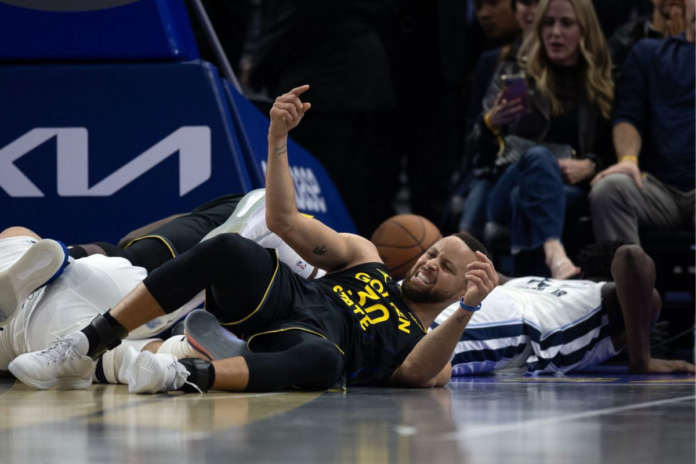The Golden State Warriors have shocked many this season, sitting near the top of the standings despite not pursuing trades for stars like Paul George and Lauri Markkanen. Their role players have stepped up, but it’s Stephen Curry who’s truly stood out, building on his strong Team USA performance in Paris this summer. However, injury concerns continue to hover over Curry. Recent reports indicate that a potential injury could impact his availability for Monday’s game against the Los Angeles Clippers.
Curry is dealing with left knee bursitis. Before it was an ankle ailment which caused the 2x MVP to miss three games for the Warriors this season. Well, thanks to Dr. Nirav Pandya, we know what knee bursitis is. Bursa are small, fluid-filled sacs that cushion joints and reduce friction. When these sacs around the knee become inflamed, it’s called bursitis. This inflammation often happens from a fall or contact. Treatment usually involves resting, applying ice, and using anti-inflammatory medications.
ADVERTISEMENT Article continues below this ad
It can happen in different parts of the body, including the knee, elbow, and hip, especially for people who engage in repetitive activities or sports. When the bursa gets irritated, it produces extra fluid, which causes pain and swelling around the joint.
ADVERTISEMENT Article continues below this ad
There are a few common causes of bursitis. You can experience it due to a direct impact or injury, leading to a condition known as “acute bursitis.” If the irritation is caused by repetitive overuse or pressure on the area, it can lead to “chronic bursitis.” In rare cases, bursitis may develop from an infection, particularly if there’s a cut or injury that allows bacteria to enter the bursa.
For athletes, dealing with bursitis typically involves addressing the inflammation and swelling. The treatment is fairly simple: rest the affected area, avoid sporting activities, apply ice, and take anti-inflammatory medications. This usually helps reduce the swelling. In more severe cases, where there’s significant swelling, draining the area or injecting steroids might be necessary. Surgery is rarely needed and is typically reserved for chronic cases or infections.
ADVERTISEMENT Article continues below this ad
The good news is that most athletes recover quickly from acute bursitis, especially if it’s caused by a fall or blow. The focus is on preventing further injury from compensating and ensuring the inflammation doesn’t become a recurring issue. It’s crucial to address the pain and swelling early, so it doesn’t turn into a chronic problem.
This is a developing story…



